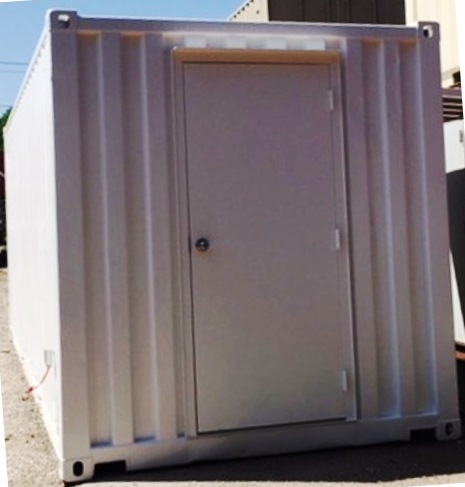 If you’re absolutely in love with the corrugated, industrial and modular look that’s distinctive of shipping-container structures, then you’re definitely right on-trend! And as it turns out, this aesthetic coupled with the extreme security against break-ins that steel containers offer might well be one of the most appealing factors when it comes to deciding to build with shipping containers.
If you’re absolutely in love with the corrugated, industrial and modular look that’s distinctive of shipping-container structures, then you’re definitely right on-trend! And as it turns out, this aesthetic coupled with the extreme security against break-ins that steel containers offer might well be one of the most appealing factors when it comes to deciding to build with shipping containers.
It’s a decision that warrants careful consideration, though. For one thing, it’s debatable whether building with containers will save you money. What’s more, your construction team will require absolute competence when it comes to the science of these modular structures—not to mention a flawless understanding of various methods of insulating. Nevertheless, people are still eagerly choosing to build with containers—and they’re doing it, quite often, without regret!
Numerous current articles detail the ins and outs of container building, and even a quick perusal of the readily available literature reveals certain themes:
- Research and expertise are required when it comes to insulation. In fact, without a foolproof insulation plan in place before the construction work begins, issues with condensation, roof-ventilation, excessive wind noise, and of course heating-and-cooling challenges can arise. Again, the key is expertise: it’s repeatedly recommended that your contractor should have plenty of experience building with containers.
- Especially with a “stacked” design it’s crucial to understand a container’s structural ability and how this can work modularly—in other words, know the most efficient way to keep the load-bearing walls strong. Whenever possible, don’t cut the containers, since they’ll need to be steel-reinforced and welded when they’re cut. Again, a structural engineer with container experience will prove invaluable.
- Know local building codes before you buy your land. That way you can avoid as many limitations as possible and choose the best location based on how your design fits into the codes.
- Examine all possible hidden costs, and don’t assume that a container structure is necessarily going to be cheaper than a conventional building. It cannot be overstated that a good structural engineer can save you money. Some cost-cutting tips include minimizing cutting and therefore welding and steel-reinforcement costs, and, most important, have your entire plan in place before you begin—details that might be easily added or altered as an afterthought with a traditional structure, such as those involving holes in the steel for plumbing and wiring, frequently require invasive backtracking when it comes to container buildings.
- Foremost, though, know and trust the company from which you buy your containers. Many builders report preventable problems that stem from the very beginning—from the purchase of their containers. For example, make sure you understand the advantages of barely-used containers, known as “one-trip” containers, and what great savings they can offer. Choose a company with the experience and knowledge necessary to explain every aspect of possible container choices: don’t get stuck with an inappropriate container because all your options weren’t fully explained to you.
Nothing can beat the security or the novel appearance of a container dwelling, and many folks who have undergone the challenges of building such structures wouldn’t change a thing.
To make sure that you, too, are a satisfied shipping container customer, whether you’re building or simply storing or transporting, contact us before your project begins!

